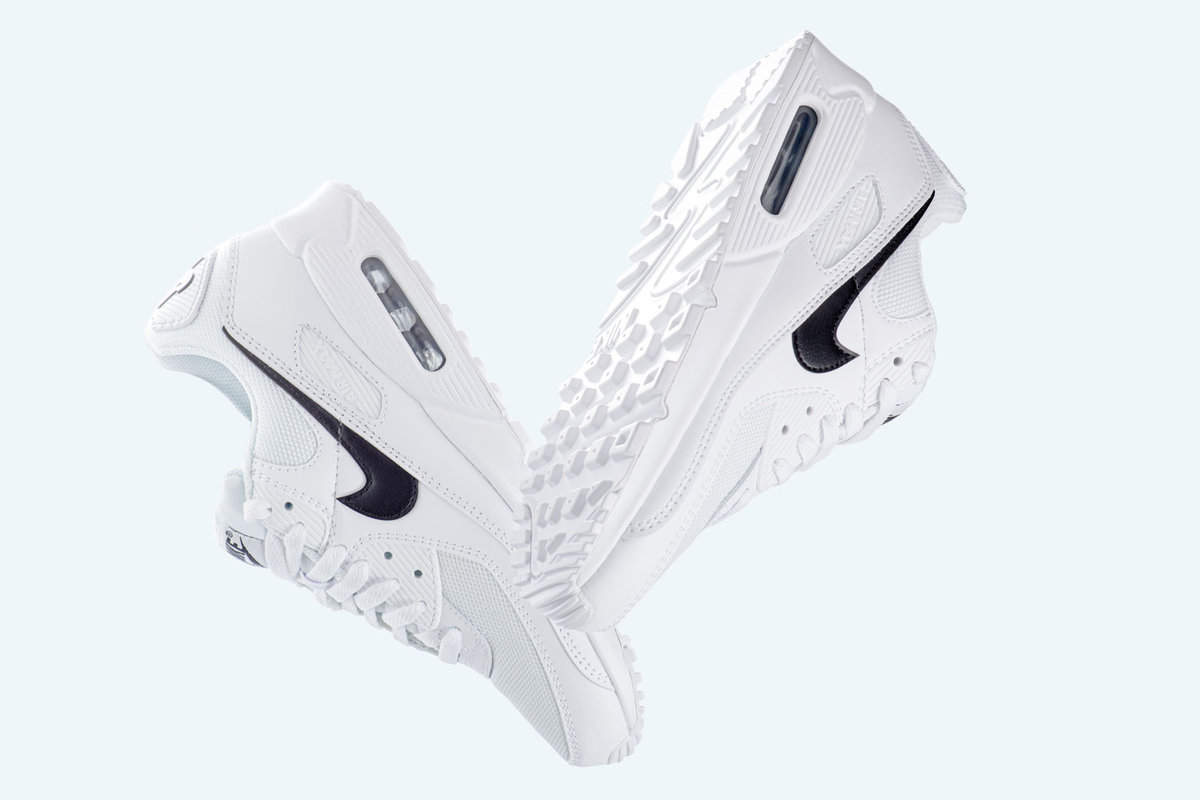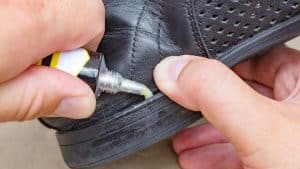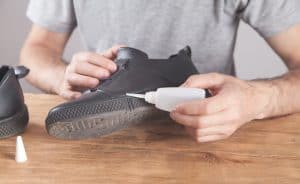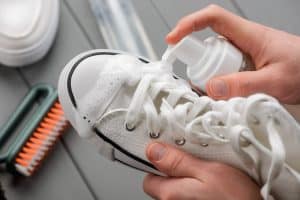Sneakers, especially those crafted by renowned brands like Nike, are not just functional footwear; they're a fusion of fashion, technology, and sportsmanship.
Naturally, these products demand the best materials and methods of construction. Among those essential materials is glue.

This article may include affiliate links and elements that were carefully created by our team using advanced ai to help you envision the best style advice.
But have you ever wondered what type of glue Nike uses or how you can mend your beloved Nike shoes if they fall apart?
Dive deeper with us and unlock the secrets behind the adhesive magic that keeps every stride in your Nikes comfortable and secure.
What Type of Glue Does Nike Use in Its Manufacturing Process?
Nike employs a diverse range of adhesive formulas in its shoe manufacturing.
While the exact composition of the glue used in every Nike model is proprietary, it's known to bond various materials such as leather, rubber, and synthetic fabrics.
Specific popular models might use unique adhesive combinations, catering to the shoe's design and function demands.
Possible Types of Glue Used by Nike
In this section, we will explore some potential adhesives that Nike might use in their shoe manufacturing process.
Keep in mind that the specific adhesive used may vary depending on the type of shoe and materials used.
Hot Melt Adhesive (HMA)
Hot Melt Adhesive, or HMA, is a thermoplastic adhesive that becomes liquid when heated up and solidifies when cooled down.
This type of glue offers a strong bond and fast curing time, making it suitable for shoe manufacturing.
So, it's possible that Nike uses HMA for some of their footwear, given its quick-drying properties and strong adhesion.
Polyurethane
Another type of glue potentially used by Nike is polyurethane.
This adhesive is well-regarded for its flexibility and strength, which makes it suitable for bonding materials like synthetic leather and rubber, common materials in athletic footwear.
The flexibility of PU adhesive enables it to withstand the movements of athletes without breaking or becoming brittle, making it an ideal choice for sportswear applications.
Nike, a major player in this industry, might use polyurethane-based glues, especially for parts of the shoe that require both flexibility and strength.
Contact Cement
Contact cement is an adhesive that is applied to both surfaces intended for bonding. After application, the surfaces are allowed to dry and then pressed together.
Because of its strong adhesive properties and ability to bond a variety of materials, contact cement is another adhesive that could be considered in shoe production.
It's possible that certain aspects of Nike's footwear, such as attaching soles to uppers, could benefit from the properties of contact cement.
Want to know more about shoe repair solutions, including the use of Gorilla Glue?
They have sustainable innovations in place, including reusing existing plastics, yarns, and textiles, to significantly reduce emissions on their journey to zero carbon and zero waste.
Explore Can Gorilla Glue Fix Shoes? for a comprehensive guide on fixing your favorite footwear.
How Does Nike Ensure the Durability and Reliability of Its Adhesive Bonding?
We assume that Nike ensures the durability of its adhesive bonding by following a set of compliance requirements like those outlined in their sustainability policies.
These requirements are evaluated through regular assessments of supplier factories, including both announced and unannounced inspections by internal and external parties.
These assessments are carried out to assess compliance with the Code Leadership Standards and Nike's Code of Conduct.
Although it doesn't provide specific details on adhesive bonding durability measures, the Code of Conduct does emphasize general compliance with health and safety and environmental standards.
In addition, Nike employs the Manufacturing Restricted Substances List (MRSL) to promote a unified approach to controlling hazardous substances in the production of footwear.
The MRSL prohibits the intentional use of priority chemicals in the manufacturing of textiles, synthetic leather, and natural leather.
Do Nike's Glues Pose Health or Environmental Risks?
Nike is well aware of these concerns and is committed to sustainability.
They have sustainable innovations in place, including reusing existing plastics, yarns, and textiles, to significantly reduce emissions on their journey to zero carbon and zero waste.
While the exact glue formulas might not be publicly disclosed, we can assume that Nike takes these concerns seriously and seeks to minimize risks in their production process.
What Type of Glue Should I Use to Fix My Nike?
Fixing your Nike shoes may require different types of adhesives depending on the material and the specific repair required.
Here are some popular shoe glue options to consider for various types of shoe repairs:
Loctite Super Glue Ultra Gel Control
Renowned for its reliability in shoe repairs, Loctite Ultra Gel Control provides strong bonding for many materials, encompassing rubber, leather, canvas, and plastic.
The glue boasts a quick-drying formula, ensuring fast and solid results.
Use this adhesive when mending torn or split soles, flapping parts, or fixing loose insoles.
Apply a thin layer on one surface, press the parts together quickly, and hold as needed for the best results.
Barge All-Purpose Cement
Barge All-Purpose Cement is well-known for its robust bond strength and versatility.
This adhesive works well for leather, rubber, cork, and even metal repairs. Easy to use, Barge Cement forms secure and long-lasting bonds.
Applying this adhesive on both surfaces, let them dry for a bit, and then press them together.
Barge All-Purpose Cement offers a fantastic solution for repairing soles, seams, and other parts of your Nike shoes.
Shoe Goo
A popular choice among athletes, Shoe Goo is a waterproof adhesive perfect for restoring athletic shoes.
Its flexible nature makes it suitable for various leather, rubber, vinyl, and canvas materials. Shoe Goo also dries clear, making it ideal for maintaining the original aesthetics of your Nikes.
To repair your shoes with Shoe Goo, clean the surfaces, apply the adhesive, press the pieces together, and allow the glue to cure for a strong bond.
E-6000
E-6000 is an industrial-strength adhesive that is perfect for heavy-duty shoe repairs.
This waterproof and flexible adhesive works great for various leather, rubber, plastic, and fabric materials.
E-6000 ensures strong, lasting bonds that can withstand wear and tear.
For best results, apply a thin layer of E-6000 to one surface, press the parts together, and let it cure.
This adhesive is excellent for repairing ripped parts, detached soles, broken straps, and other shoe-related issues.
In Closing
As we've delved, exploring potential Nike glues and shoe repairs reveals the importance of minor details, like glue, in the larger shoe manufacturing story.
As a consumer, your connection to your footwear can be both emotional and practical.
Recognizing the substances that bind your favorite pairs together can deepen your appreciation and understanding of the craftsmanship behind every Nike shoe.
We hope this exploration has been enlightening. We're curious: Do you have any personal experiences or insights about repairing your Nikes or other shoes?
Your feedback and stories are invaluable to us, so please share your thoughts in the comments below.
For more fascinating stories about the world of sneakers, don't miss TikTok Grandpa Takes The Fashion World By Storm With His Nike Dunks.







